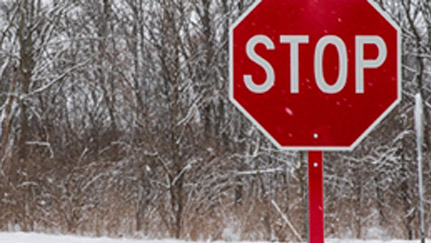Share these guidelines with your company’s drivers to help them avoid costly collisions.
Subscribe to our newsletter for timely content in your inbox

Stopping distance is the distance needed to bring a moving vehicle to a complete stop. Understanding this principle is incredibly important.
If you’re not able to accurately calculate stopping distance, you run the risk of a serious accident. That could result in property damage and bodily injury to yourself and others. It could even result in death.
The following driver safety facts give you the information you need to help you control and stop your vehicle.
Perception time is the three-quarters of a second it takes for you to realize you need to break - after your eyes see a hazard. So, if you’re driving at 65 mph, your vehicle will travel 71 feet before you realize you need to start braking.
Reaction time is also three-quarters of a second. By the time you move your foot from the accelerator to the brake, three-quarters of a second have passed. Again, at 65 mph, that’s another 71 feet traveled.
So far, your vehicle has traveled 142 feet and you haven’t even touched the brake.
Braking distance is the distance it takes to stop your vehicle once you apply the brakes. At 65 mph, it takes an additional 5.5 seconds or about 525 feet of actual brake application to stop your vehicle.
Stopping distance is the total distance needed to bring your vehicle to a complete stop. To determine the stopping distance, you calculate:
Perception Distance (71 feet) + Reaction Distance (71 feet) + Braking Distance (525 feet) = Stopping Distance (667 feet)
Common sense tells us that when conditions change, times and distances change with them. Among the factors that increase total stopping distance include:
It's important to know that an empty truck requires a greater stopping distance than a fully loaded truck, because an empty truck has less traction. That means there’s less friction between the tires and the road. An empty truck may also bounce and lock up its wheels, resulting in poor braking capacity.
Wet roads can significantly reduce your ability to stop your vehicle. In general, wet roads can double your stopping distance. In order to stop a vehicle on a wet road using the same stopping distance as a dry road, you’ll need to drive slower.
On wet roads, you should reduce your speed by about one-third. For example, slow down from65 mph to around 43 mph. On snow-covered roads, you should reduce your speed by at least one-half. This will help ensure that you have an adequate stopping distance.
Before traveling on potentially hazardous and slippery roads, be aware of these common dangers: